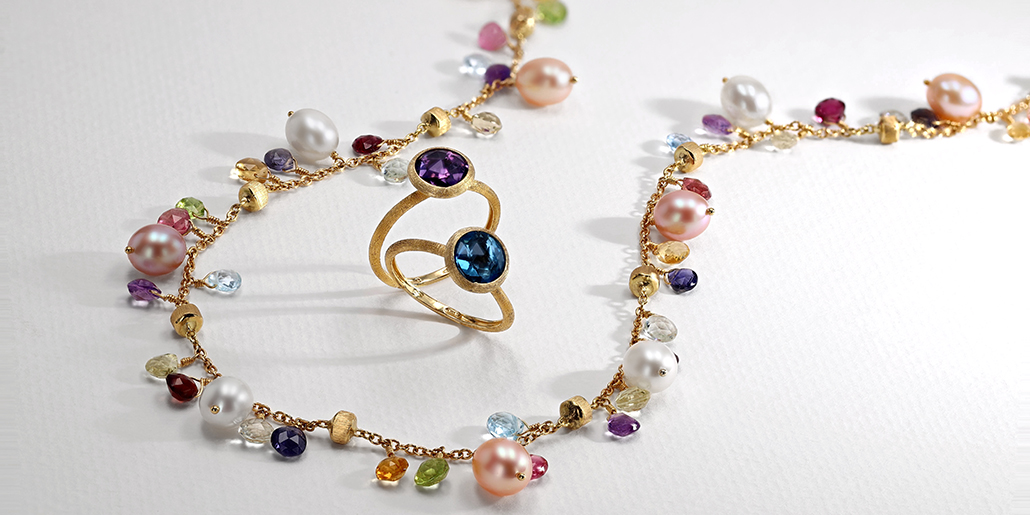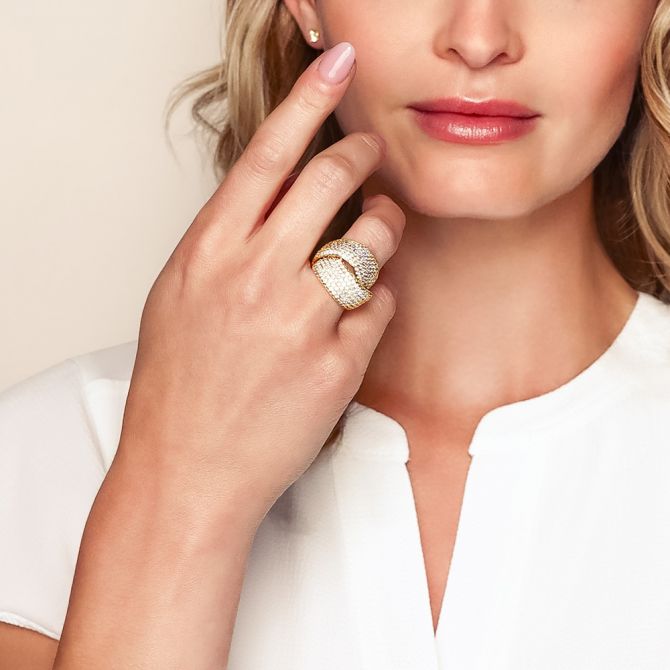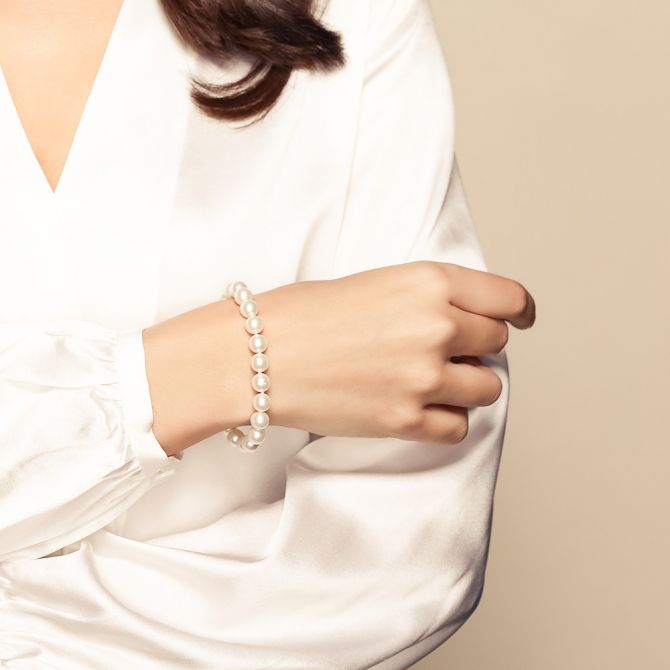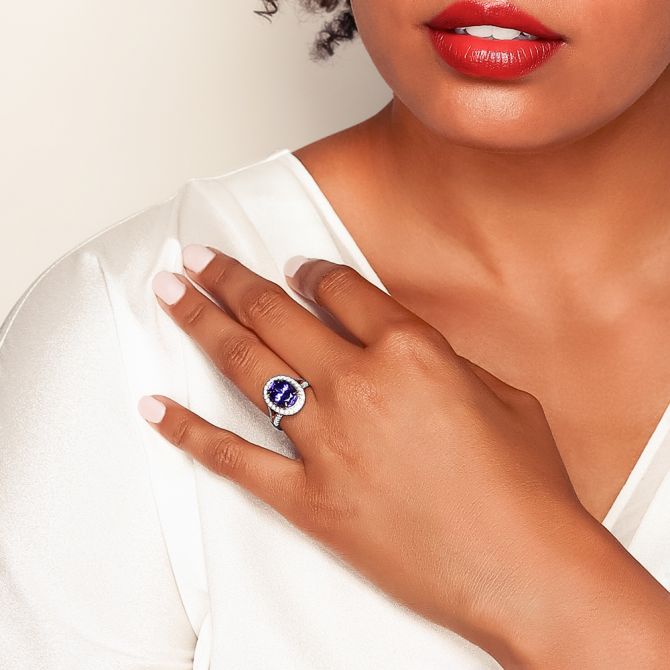Cleaning gemstones demands a bit more tact compared other materials. Our A-Z guide for at-home gemstone jewelry cleaning outlines our preferred methods for cleaning common gemstones. While we recommend professional cleaning, these alternatives can serve in a pinch.
It’s acceptable to clean the following gemstones at home using a solution of lukewarm water and soft, unscented soap (refer to each gemstone for greater instructions and warnings) followed by a soft cloth for drying. If ever in doubt, leave your gemstone jewelry with us for cleaning by an on-site, GIA-certified jeweler.
Amethyst
Amethyst is a quartz variety that can crack as well as fade if exposed to high temperatures and intense light for extended periods. Avoid thermal shock and use caution if cleaning with an ultrasonic jewelry cleaner and/or jewelry steam cleaner.
Aquamarine
Aquamarine, a blue variety of the mineral beryl, may receive heat, irradiation, and fracture filling treatments. Keep heat exposure at a minimum to prevent color fading and forget ultrasonic cleaners and steamers especially if liquid inclusions or feathers are present.
Citrine
Natural citrine is extremely rare so most citrine on the market originates from the heat treatment of amethyst. That said, it shares many chemical properties similar to amethyst, including a tendency to fade under high heat. Use caution if you decide to utilize an ultrasonic cleaner and/or steamer.
Diamond
Diamond resists scratches better than any other gem, but it is susceptible to damage from physical blows. You may use an ultrasonic cleaner or steamer to clean your diamond jewelry but be sure to examine the stone beforehand. If you notice any feathers, fractures, or inclusions, bring the item in for expert cleaning and inspection.
Emerald
Emerald belongs to the same mineral family as aquamarine, distinguished only by its green hue. Emerald is a soft stone that often contains inclusions and tiny fissures (typically filled with oils or resins to enhance appearance). We advise against using solvents (alcohol, acetone, ammonia etc.) and harsh chemicals to clean your emerald jewelry because they can dissolve the gem’s treatments, leading to a dull and altered appearance. For these reasons, avoid ultrasonic cleaners and steamers.
Garnet
Although a relatively hard and tough gem, the garnet does exhibit some heat sensitivity. While ultrasonic cleaners and steamers can generally be used safely (though risky if liquid inclusions are present), it’s crucial to avoid subjecting the stone to thermal shock.
Opal
Opals are highly sensitive to temperature fluctuations so it’s essential that the water used to clean them remains at room temperature. Excessive heat and intense light promote dehydration which can result in crazing (cracking) if you’re not careful. Just like with pearls, refrain from wiping dirt off your opal jewelry as this can easily scratch the soft stone. Some natural, smoke, or sugar-treated opals are very porous so forgo use of liquids (jewelry polish) and ultrasonic cleaners and steamers.
Note that layered opals (doublets and triplets) should never be soaked in soapy water. This might dissolve the glue holding the layers together.
Pearl
Never dunk or even dip your pearls into the soap and water solution because moisture trapped in the drill holes can cause discoloration. This is why you must always thoroughly dry your pearl jewelry after any encounter with water. Similar to opals, pearls can become dehydrated and craze under intense heat and light. Avoid salt water, chlorine water, and household cleaners, all of which can weaken the nacre (outer layer of the pearl). We discourage the use of ultrasonic cleaners and steamers with pearls because of their sensitivities.
Peridot
Acids (even from perspiration), heat, and surface scratches can diminish the finish of peridot stones. If you do attempt to clean your peridot jewelry yourself, refrain from using any mechanical systems.
Tanzanite
Tanzanite is a fragile gemstone that is sensitive to heat and vibrations. To sidestep thermal shock, steer clear of ultrasonic and steam jewelry cleaners.
Topaz
Mechanical cleaning is dangerous for a stone such as topaz that is easily shocked. Plus, some yellow-brown varieties may fade from such mechanisms.
For the following gems, we insist on professional cleaning and deter you from using ultrasonic and steam cleaners entirely due to the delicacies of the stones.
Ruby and Sapphire
Ruby and sapphire gems, of the corundum family, undergo treatments that make nearly all cleaning methods unsafe. It’s best to let our trained team of jewelers handle the cleaning process of your ruby and sapphire jewelry.
Tourmaline
Although a reasonably hard stone, tourmaline is vulnerable to vibration damage and stones treated with irradiation can fade under intense heat or light. Rest assured; your tourmaline jewelry is safe in the hands of our bench jewelers, who will return it to you in brand-new condition.
Turquoise
Turquoise is a very porous gemstone material that most cleaning solutions will penetrate, turning it green and/or an unattractive off-blue color. Even handling, when not done with the appropriate considerations, can cause discoloring. Our on-site jewelers possess the tools and expertise to clean your turquoise jewelry with the proper techniques, ensuring a seamless process for both your jewelry and you.
The outcomes of at-home cleaning can vary significantly depending on the type and strength of the solutions you use and the intensity and frequency of their applications. Overall, we recommend having your precious gemstones cleaned by one of our professional jewelers and advise against washing them at home as a precaution to protect their quality. Our jewelry experts are at your service daily from 10 am-6 pm to address your every inquiry, either in–store or over the phone.















